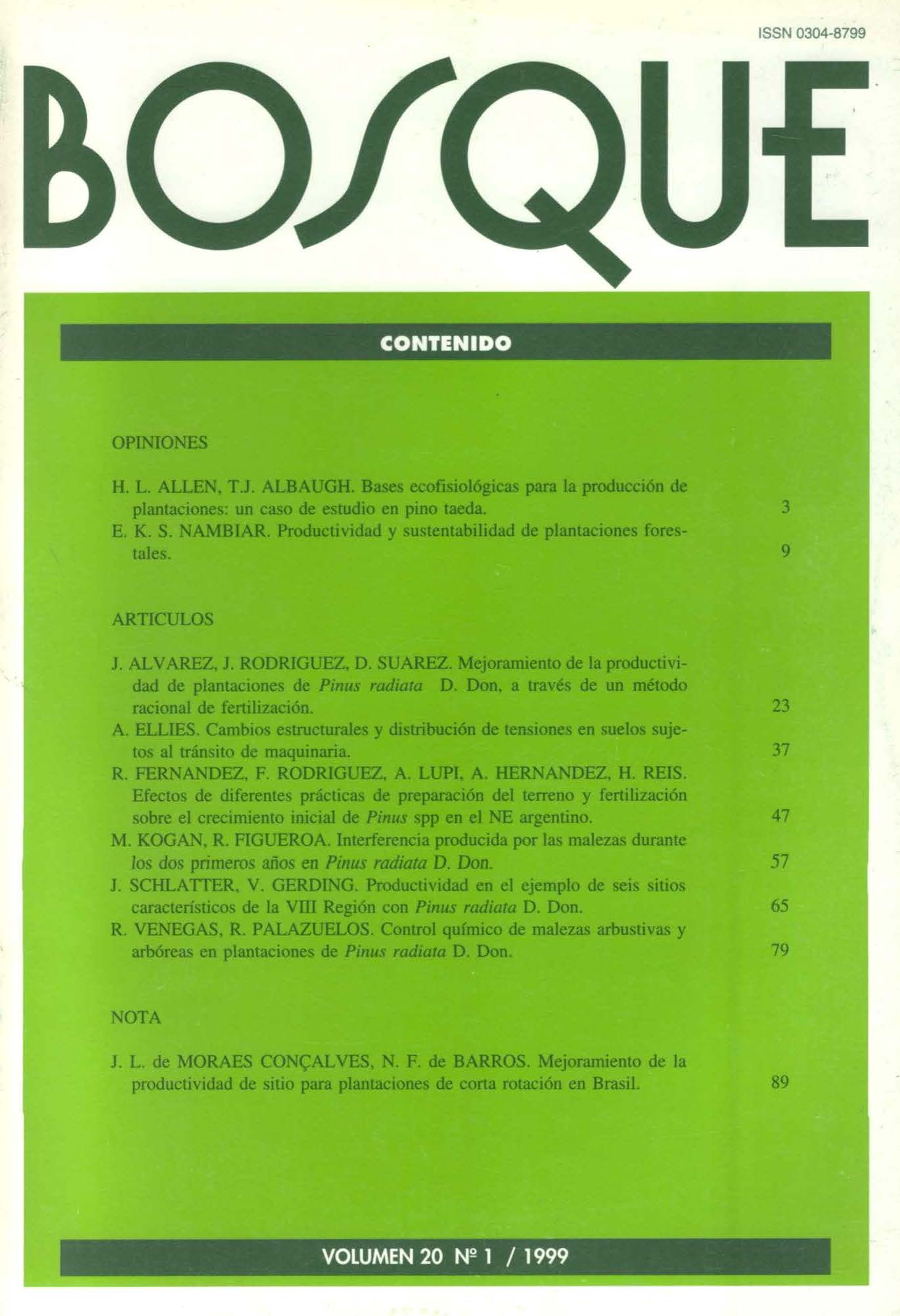Productivity improvement of Pinus radiata D. Don plantations using a rational fertilisation method
Main Article Content
Abstract
The main purpose of the Radiata pine fertilisation research program is to develop a predictive model that prescribes fertilisation for different site conditions.
The simplest approach to the model consists in a nutritional balance equation expressed as: Fertilisation rate = (Tree nutrient demand - Soil nutrient supply) / Fertilisation efficiency.
Units are expressed as kg/hectare but fertiliser efficiency is expressed as recovery percentage.
In order to apply this model, Forestal Mininco S. A. installed four field experiments under four different ecological conditions for tree growth: coast; north central valley; south central valley and volcanic soils. These trials were focused on determining the model's main parameters as well as the growth increase as a result of N, P, K and B fertilisation.
Results so far show preliminary but useful information to estimate the amounts of nutrients required by trees from planting date to two years later. The same occurred for soil nutrient supply as well as fertiliser efficiency. Otherwise, the growth increase rated from zero in the case of potassium fertilisation, up to 160% with phosphorus applications. Nitrogen fertilisation produced a yield increase of 20% and boron additions resulted in smaller increases. The nutrient rates related were 20 g of N, 10 g of B and up to 200 g of P2O5 /plant. Fertiliser efficiency values were much smaller than those found for agricultural crops using the same nutritional model.

